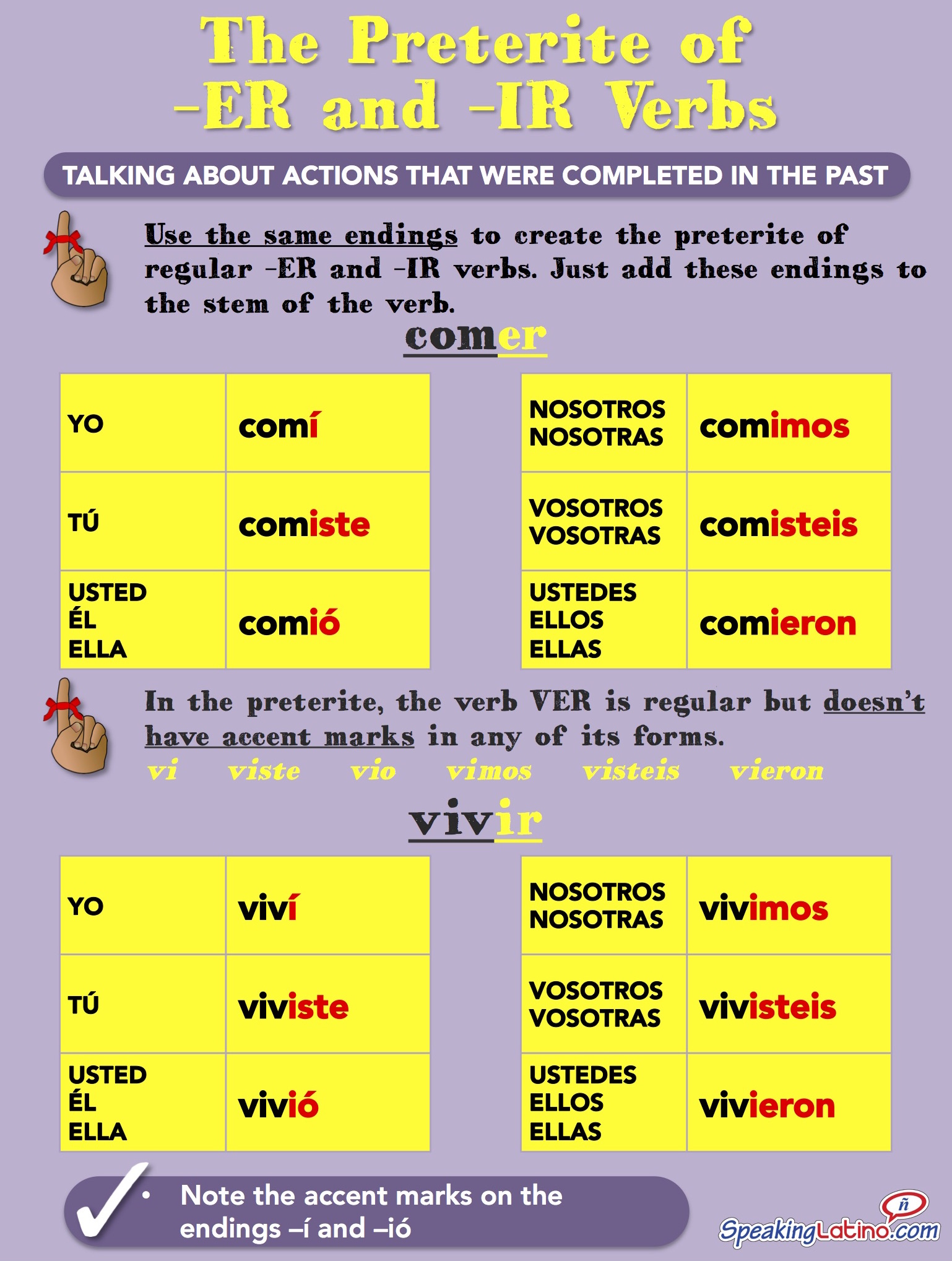
My neighbors painted and renovated their house. Mis vecinas pintaron y remodelaron su casa. Sequence of actions completed in the past My grandmother met my grandfather in 1950. (Subject pronoun) + ĭid you know that Greg and Pam got married?Īctions that occurred or began at a specific point in the past or lasted a specific amount of timeĮleanor vivió en Barcelona durante tres años.Įleanor lived in Barcelona for three years. Sequence of events or actions completed in the past.īelow I’ve provided examples to clarify and illustrate each of these uses for the preterite tense in Spanish and various situations in which you can use them.Actions that began or lasted a specific period of time in the past.

Actions that were completed in the past.We use the preterite in Spanish to talk about: However, this tense conveys that those actions ended or were completed at some point in the past. When to Use the Spanish PreteriteĪs a Spanish past tense, the preterite refers to past actions and events. This can be an easy and quick way to tell which verb is being used. However, unlike ‘ser’, ir is always followed by the preposition ‘a’ (to). Take Note: Since they have the same conjugation, it can be hard to tell if we’re referring to ser or ir. The context can help you tell which verb is being used.

In fact, in the preterite tense, these verbs have the same conjugation. So to conjugate these verbs, you can follow this formula: Here are some patterns of irregular verbs in the Spanish preterite tense.ĭerivatives of ‘traer’ and verbs with a ‘-ducir’ suffix Can you tell why? Because the irregularities of these verbs are more than enough to indicate that they are in the preterite form. Irregular endings do not have an accent mark. With the exception of ser and ir, the endings for irregular verbs are: Subject These irregular verbs have significant changes on their stems and they also use slightly different endings. Unlike the imperfect tense in Spanish, the preterite has many irregular verbs. However, when it comes to speaking, make sure to adjust your pronunciation. In writing situations, you only need to add the proper accent mark. Take Note: Accent marks are key for the Spanish preterite conjugations. Hey, guys, did you already read the book? You can see the changes you have to make in the graphic below:īelow are some examples with the verbs vestirse, tocar, llegar and leer. Verbs that result in triphthongs (leer, construir, oír, huir, caer).Verbs that end in ‘-car’, ‘-gar’, ‘-zar’.Here are the verbs and the subject pronouns you need to watch out for:

Verbs with spelling changes in the present tense will also have changes in the preterite tense. Check the preterite form of comprar, comer and vivir.Īs you may already know, the present tense has many stem-changing verbs in Spanish. So, all you have to do is add these endings to the verb stem.

The preterite endings for regular verbs are: Subject
#PRETERITE ENDINGS SPANISH AR HOW TO#


 0 kommentar(er)
0 kommentar(er)
